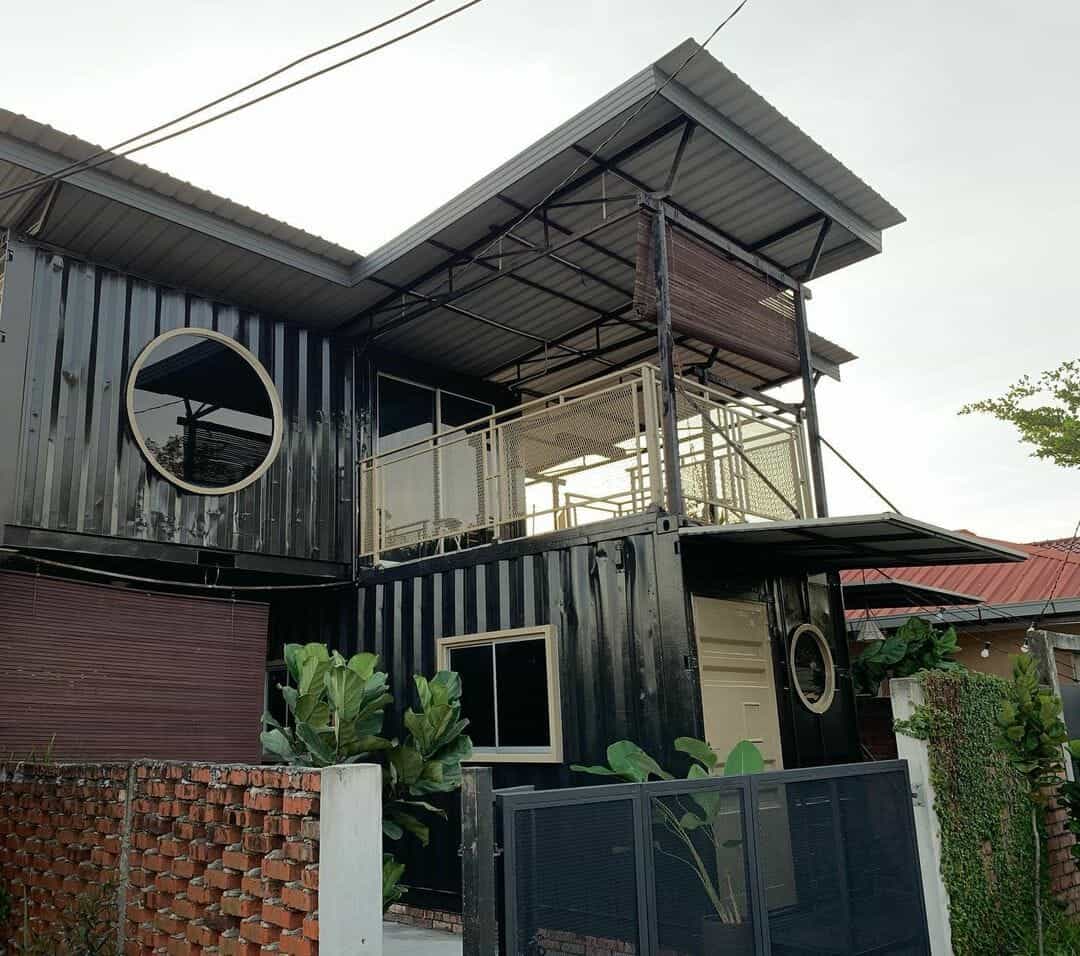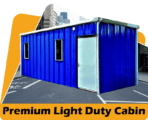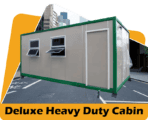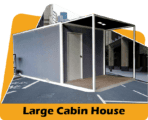
Unveiling the Cost of Container Houses in Malaysia
Table of Contents
- Introduction
- Understanding Container Houses
- Factors Influencing the Cost
- Location
- Size and Layout
- Material Quality
- Customization and Extras
- Additional Costs to Consider
- Average Cost of Container Houses in Malaysia
- Benefits of Container Houses
- Affordability
- Sustainability
- Flexibility and Mobility
- Quick Construction Time
- Energy Efficiency
- Modern Aesthetics
- Finding Container House Suppliers in Malaysia
- Container House Design and Layout Considerations
- Floor Plans
- Insulation and Climate Control
- Plumbing and Electrical Systems
- Interior Design Options
- Exterior Modifications
- Maintenance and Durability of Container Houses
- Regular Maintenance
- Dealing with Rust and Corrosion
- Insulation Upgrades
- Structural Integrity and Safety
- Legal and Regulatory Considerations for Container Houses
- Permits and Approvals
- Building Codes and Zoning Regulations
- Engaging Professional Services
- Conclusion
- Frequently Asked Questions (FAQs)
Introduction
Container houses have gained significant popularity as an affordable and sustainable housing solution in Malaysia. These unique homes offer an alternative to traditional brick-and-mortar houses, providing flexibility, mobility, and environmental consciousness. In this comprehensive guide, we will delve into the cost of container houses in Malaysia, exploring various factors that influence pricing, the benefits they provide, design considerations, maintenance requirements, and legal considerations. By the end, you’ll have a thorough understanding of container houses and their feasibility as a housing option.
Understanding Container Houses
Container houses, also known as shipping container homes, are constructed using repurposed shipping containers made of durable corten steel. These containers, originally used for transporting goods, are transformed into comfortable and functional living spaces. The containers can be modified to include essential features such as doors, windows, insulation, plumbing, and electrical systems. They can be stacked or joined together to create larger living spaces, accommodating the needs of individuals, families, or even commercial establishments.
Factors Influencing the Cost
Several factors influence the cost of container houses in Malaysia. Understanding these factors will help you estimate the budget required for your container house project.
Location
The location where you plan to build your container house plays a significant role in determining its cost. The cost of land, permits, and labor can vary across different regions in Malaysia. Urban areas and popular tourist destinations might have higher costs compared to rural or less populated regions. It’s important to consider the location’s accessibility, availability of utilities, and any additional expenses associated with land preparation.
Size and Layout
The size and layout of your container house directly affect its cost. Larger houses or those with complex designs will generally require more containers and extensive modifications, leading to increased expenses. It’s essential to determine your space requirements and work with a professional architect or builder to optimize the design while keeping costs in check. Balancing functionality with cost considerations is crucial to achieving a suitable container house.
Material Quality
The quality of materials used in the construction of your container house can impact its cost. Opting for high-quality materials ensures better insulation, longevity, and overall aesthetics. While it may incur a higher upfront cost, it can result in long-term savings by reducing maintenance and repair expenses. Investing in durable materials that withstand the local climate conditions will contribute to the longevity of your container house.
Customization and Extras
The level of customization and additional features you desire will influence the final cost. Customizing your container house with unique design elements, such as glass facades, balconies, or rooftop gardens, can increase the price. Similarly, adding features like solar panels, rainwater harvesting systems, or smart home technology will incur additional expenses. Carefully consider your customization options, weighing them against your budget and requirements.
Additional Costs to Consider
Aside from the primary construction costs, it’s essential to factor in additional expenses associated with container houses. These may include transportation and delivery of the containers to the construction site, site preparation, foundation construction, plumbing and electrical connections, insulation upgrades, interior finishes, and landscaping. By accounting for these costs, you can develop a realistic budget for your container house project.
Average Cost of Container Houses in Malaysia
The cost of container houses in Malaysia varies based on the factors mentioned above. On average, the price can range from RM 80,000 to RM 300,000 or more, depending on the size, location, level of customization, and quality of materials. It’s crucial to research and compare prices from different suppliers and builders to ensure you get the best value for your investment. Requesting detailed quotes and evaluating the included features and services will help you make an informed decision.
Benefits of Container Houses
Container houses offer numerous benefits that make them an attractive housing option. Let’s explore some of these advantages:
Affordability
One of the primary advantages of container houses is their affordability. Compared to conventional houses, container homes offer a cost-effective alternative, allowing individuals or families to own their homes without incurring substantial debt. The reduced construction time and lower material costs contribute to their affordability. Container houses also provide an opportunity to enter the housing market at a more accessible price point.
Sustainability
Container houses are considered environmentally friendly as they utilize recycled shipping containers, reducing the demand for new construction materials. By repurposing these containers, it helps reduce waste and promotes sustainable living practices. Additionally, container houses can be designed to incorporate eco-friendly features like energy-efficient insulation, solar panels, and rainwater harvesting systems. These features contribute to lower energy consumption and a reduced carbon footprint.
Flexibility and Mobility
Container houses provide flexibility and mobility, making them suitable for various purposes. Whether you want a permanent residence, a vacation home, an office space, or an art studio, container houses can be customized and relocated accordingly. Their modular design allows for easy transportation and installation, offering convenience and adaptability. Container houses can also be expanded or downsized, providing the flexibility to accommodate changing needs over time.
Quick Construction Time
Compared to traditional construction methods, container houses have a significantly shorter construction time. The use of pre-fabricated containers speeds up the building process, enabling you to move into your new home sooner. This quick turnaround time is particularly advantageous if you have time constraints or need immediate accommodation. Container houses offer a more efficient construction process without compromising on quality.
Energy Efficiency
Container houses can be designed to be highly energy efficient. With proper insulation, strategic placement of windows and doors, and the incorporation of energy-saving technologies, container houses can reduce energy consumption and utility costs. The tight building envelope of containers, when combined with efficient HVAC systems, helps maintain comfortable indoor temperatures throughout the year. Energy-efficient design elements contribute to long-term cost savings and a reduced environmental impact.
Modern Aesthetics
Container houses offer a contemporary and modern aesthetic that appeals to many individuals. The sleek lines, industrial finishes, and minimalist design create a unique and stylish living space. These homes can be further customized with various exterior finishes, cladding options, and architectural features to suit personal preferences. Container houses provide an opportunity to express individuality and creativity in home design.
Finding Container House Suppliers in Malaysia
If you’re considering a container house, it’s essential to find reputable suppliers and builders in Malaysia. Look for companies that specialize in container house construction and have a proven track record. Read customer reviews, visit their previous projects, and inquire about their expertise in container house design and customization. Engaging professional services will ensure a smooth building process and a high-quality end product. Obtain detailed quotations and clarify any doubts or concerns before finalizing your choice of supplier or builder.
Container House Design and Layout Considerations
When planning your container house, several design and layout considerations are worth exploring:
Floor Plans
Container houses offer various floor plan options to suit different lifestyles and needs. Consider factors such as the number of rooms required, open-concept versus compartmentalized spaces, and the flow of movement within the house. Collaborating with an architect or designer can help create a functional and aesthetically pleasing layout.
Insulation and Climate Control
Proper insulation is crucial for maintaining comfortable indoor temperatures and energy efficiency. Choose insulation materials suitable for the local climate conditions. The container walls, roof, and floor can be insulated to prevent heat transfer and improve thermal performance. Adequate ventilation and the installation of energy-efficient windows and doors contribute to a comfortable living environment.
Plumbing and Electrical Systems
Designing the plumbing and electrical systems requires careful planning to ensure functionality and compliance with building codes. Consult professionals to determine the best placement of pipes, drains, and electrical outlets to optimize convenience and efficiency. The systems should be designed to accommodate the specific needs of your household, taking into account water supply, drainage, and power requirements.
Interior Design Options
Container houses provide ample opportunities for interior design creativity. Explore various design styles and select finishes, colors, and furnishings that reflect your personal taste and create a welcoming atmosphere. Optimize storage solutions to maximize usable space, and consider multi-purpose furniture to enhance functionality. Incorporate natural light and utilize space-saving techniques to make the most of the compact footprint.
Exterior Modifications
Container houses can be enhanced through exterior modifications. Consider adding balconies, terraces, or porches to extend outdoor living areas. Landscaping around the house can soften the industrial look of the containers and create a harmonious blend with the surroundings. Select suitable cladding materials to provide additional weather protection and aesthetic appeal.
Maintenance and Durability of Container Houses
Maintaining the durability and longevity of container houses involves regular upkeep and addressing specific challenges:
Regular Maintenance
Container houses require regular maintenance to ensure their structural integrity and functional performance. Inspect the exterior and interior for any signs of wear, rust, or corrosion. Perform routine cleaning and repairs as needed. Regularly check the plumbing and electrical systems to identify any leaks or malfunctions. Maintaining a well-maintained container house will contribute to its longevity and preserve its value.
Dealing with Rust and Corrosion
Rust and corrosion can be common issues with container houses due to their exposure to the elements. Regularly inspect the container walls and apply suitable anti-rust treatments or protective coatings as necessary. Promptly address any signs of rust or corrosion to prevent further damage. Proper maintenance and periodic inspections are essential for preventing and managing these issues.
Insulation Upgrades
Over time, insulation may deteriorate, compromising energy efficiency and comfort. Consider periodic insulation upgrades to maintain optimal thermal performance. Replacing or adding insulation materials can help reduce heat transfer, improve energy efficiency, and enhance soundproofing. Consult professionals to determine the most suitable insulation solutions for your container house.
Structural Integrity and Safety
Container houses are designed to withstand various weather conditions and maintain structural integrity. However, periodic inspections are necessary to identify any potential structural issues. Check for signs of structural movement, cracks, or compromised connections. Engaging a professional engineer or architect to assess the structural integrity of your container house can provide peace of mind and ensure safety.
Legal and Regulatory Considerations for Container Houses
Before embarking on a container house project, it’s crucial to navigate the legal and regulatory landscape:
Permits and Approvals
Container houses are subject to local building regulations and may require permits and approvals. Contact the local authorities or municipal councils to understand the specific requirements for your area. Obtain the necessary permits for construction, electrical and plumbing installations, and occupancy. Compliance with regulations ensures the safety and legality of your container house.
Building Codes and Zoning Regulations
Ensure that your container house project adheres to relevant building codes and zoning regulations. Familiarize yourself with the specific requirements for structural design, fire safety, ventilation, electrical systems, and accessibility. Consulting professionals who are knowledgeable about local building codes and zoning regulations will help ensure compliance and avoid potential setbacks.
Engaging Professional Services
Working with professionals throughout your container house project is essential for a successful outcome. Engage architects, engineers, and builders with experience in container house construction. Their expertise will guide you through the design process, navigate legal requirements, and ensure that your container house meets safety standards and regulations.
Conclusion
Container houses in Malaysia provide an affordable, sustainable, and versatile housing option. With their unique design, mobility, and various benefits, they are gaining popularity among individuals and businesses alike. Understanding the factors that influence the cost, exploring the advantages they offer, and considering design, maintenance, and legal considerations will help you make an informed decision about investing in a container house. Embrace the possibilities of container living and embark on a housing solution that combines functionality, affordability, and sustainability.
Frequently Asked Questions (FAQs)
- Are container houses legal in Malaysia? Yes, container houses are legal in Malaysia. However, it’s essential to obtain the necessary permits and approvals from the local authorities before starting your construction project. Each region may have specific regulations, so it’s advisable to consult with the relevant authorities to ensure compliance.
- Can container houses be customized according to my preferences? Absolutely! Container houses can be fully customized to meet your specific requirements and design preferences. Working with a professional architect or designer, you can create a unique living space that reflects your personal style and functional needs.
- Do container houses require a lot of maintenance? Container houses generally require regular maintenance, but the level of maintenance depends on various factors such as the quality of materials used and the local climate conditions. Regular inspections, cleaning, and addressing any signs of rust or corrosion are necessary to maintain their durability and functionality.
- Can container houses withstand extreme weather conditions? Yes, container houses are designed to withstand various weather conditions, including heavy rain, strong winds, and high temperatures. The use of durable materials and appropriate insulation ensures their resilience. However, it’s important to consider the local climate and engage professionals who can advise on specific design considerations for extreme weather conditions.
- Are container houses a good investment? Container houses can be a good investment due to their affordability, sustainability, and versatility. They offer an alternative housing solution and have the potential for high returns if you plan to rent or sell the property in the future. However, it’s crucial to consider market conditions, location, and demand when assessing the investment potential.
- Can I finance a container house? Financing options for container houses may vary depending on the region and individual circumstances. It’s advisable to consult with financial institutions or mortgage lenders to explore available financing options. Some lenders may offer specialized loans or construction financing for container house projects.
- Can I live in a container house all year round? Yes, container houses can be designed and equipped to provide comfortable year-round living. Proper insulation, climate control systems, and energy-efficient features contribute to a comfortable living environment. Consult with professionals to ensure your container house meets the necessary requirements for year-round occupancy.
- Can container houses be expanded in the future? Container houses offer flexibility for future expansion or modifications. Their modular design allows for additional containers to be added, increasing the living space as needed. However, it’s important to consider structural integrity, proper planning, and consulting professionals to ensure that any expansions or modifications are done safely and in compliance with local regulations.
- How long does it take to build a container house? The construction time for a container house can vary depending on various factors, such as the complexity of the design, size, customization requirements, and site preparation. Generally, container houses have a shorter construction time compared to traditional houses. The use of pre-fabricated containers and efficient building techniques can expedite the construction process.
- Where can I find container house suppliers in Malaysia? There are several reputable container house suppliers and builders in Malaysia. You can search online directories, visit home expos or construction exhibitions, and consult with local architects or designers who specialize in container house projects. Reading customer reviews and visiting previous projects can provide insights into the quality of their work.
Remember that when considering a container house, it’s crucial to conduct thorough research, engage professionals, and carefully plan your project to ensure a successful and satisfying outcome.
Desain Rumah Kabin
Rumah Kabin Kontena
Harga Rumah Kabin
Kos Rumah Kontena
Rumah Kabin 2 Tingkat
Rumah Kabin Panas
Rumah Kabin Murah
Sewa Rumah Kabin
Heavy Duty Cabin
Light Duty Cabin











